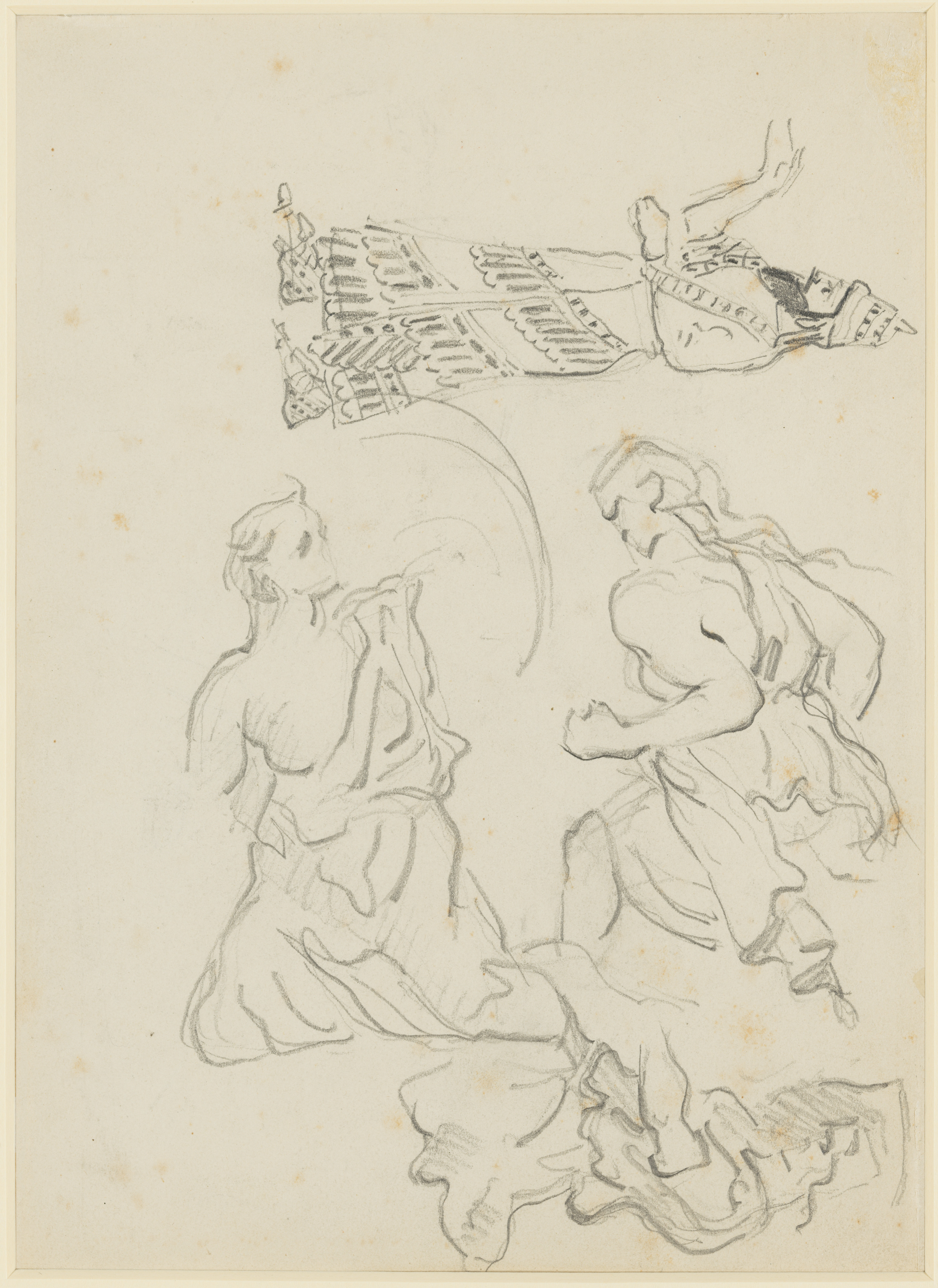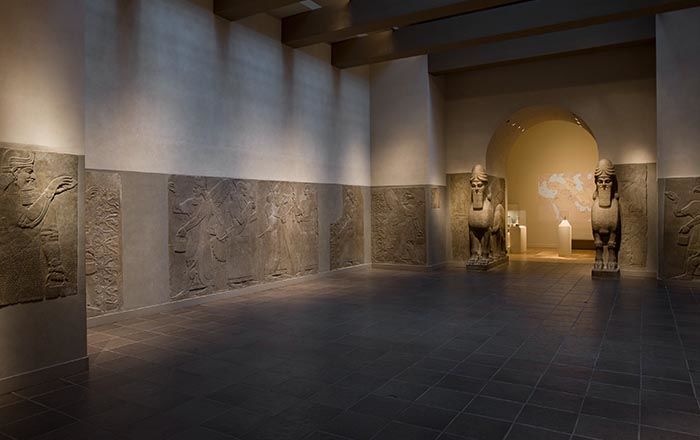Studies of Assyrian figures (two-sided)
Paul Cézanne French
Not on view
Following the excavation of Assyrian palaces in the mid-nineteenth century, ancient Mesopotamian imagery began to be used in European decorative arts, including jewelry and ceramics. Articles in periodicals and popular books described the excavations and the related sculptures removed from sites in northern Iraq to England and France, while public spectacles, such as the reconstructed ‘Nineveh Court’ in the Crystal Palace at Sydenham, London, fostered a fascination with Assyria and Assyrian art among the English and French public.
Studies on the verso of this sheet reveal Cézanne’s interest in Assyrian art. The sketched figures appear to be copies, not of elements from Assyrian reliefs at the Louvre but of illustrations in a printed book, probably color lithographs in Victor Place’s Ninive et l’Assyrie (Paris: Imprimerie Imperiale, 1867), which help to explain Cézanne’s color notes on the sketches. The writhing figures on the lower verso are not based on anything Assyrian and may respond instead to ancient Hellenistic sculpture or French Romantic paintings.
This image cannot be enlarged, viewed at full screen, or downloaded.
This artwork is meant to be viewed from right to left. Scroll left to view more.



